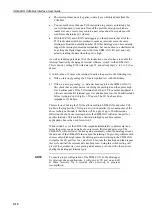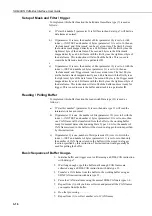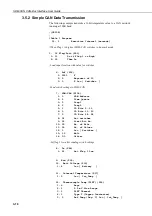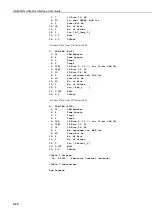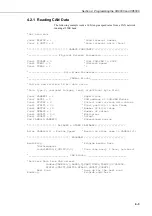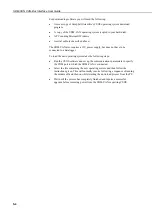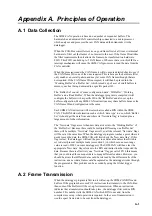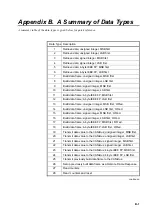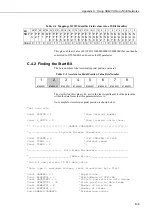
SDM-CAN CAN-Bus Interface User Guide
Time to execute block mode for a CR5000 in milliseconds with default bus speed
is approximately = 2.12 + 0.27 * n bytes of data.
This timing is only for the block mode instruction and any other instructions
within the scan will reduce the maximum possible scan rate.
4.2 Datalogger Instruction
The SDM-CAN is controlled by an instruction called CANBUS. Please check that
your datalogger’s operating system includes this instruction. You may also require
an update to your CRBASIC editor to get the full help screens. Contact Campbell
Scientific if you need advice about upgrading your operating system.
The CANBUS instruction takes the form:
CANBUS(CANDATA(),ADDRESS,TIMEQUANTA,TSEG1,TSEG2,ID,
DATATYPE,STARTBIT,NUMBITS,NUMVALS,MULT,OFFSET)
where:
CANDATA
is a variable or array which either holds data to be transmitted or will
hold data that is to be read from the CAN-Bus.
ADDRESS
is the SDM address of the SDM-CAN in question.
TQUANTA, TSEG1
and
TSEG2
have the same function as in P118 above
.
ID
is the CAN ID, where the ID is entered as a single decimal equivalent.
Entering the number as a
negative
value signifies it is an 11 bit ID, otherwise it is
a 29-bit ID.
Due to current system constraints the ID parameter must be entered
directly into the CanBus instruction.
NOTE
DATATYPE
is the same as in P118.
STARTBIT
is the same as in P118, except you enter a negative number instead of
‘indexing’ the number to signify lefthand referencing.
NUMBITS
is the same, and again a negative number is equivalent to indexing the
value to enable an interrupt.
NUMVALS, MULT
and
OFFSET
all have the same function
.
4-2





